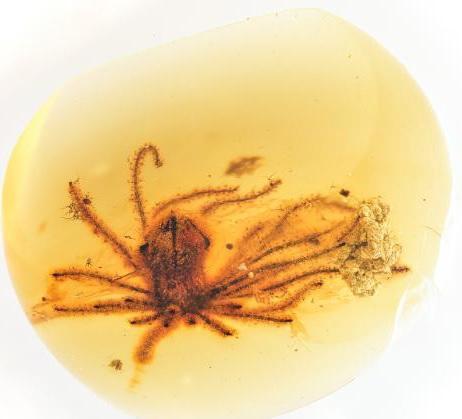
Flowers discovered perfectly preserved in globs of amber bloomed at the feet of dinosaurs, suggesting that some flowering plants in South Africa today have remained unchanged for 99 million years, a new study reveals.
The two flowers once bloomed in what is now Myanmar and may shed light on how flowering plants evolved, a major episode in the history of life that was once described by Charles Darwin as an “abominable mystery,” CNN has reported.
Flowers are ephemeral: They bloom, transform into a fruit and then disappear. As such, ancient flowers aren’t well represented in the fossil record, making these ancient blooms and the history they carry with them particularly precious.
“Leaves are generally produced in larger numbers than flowers and are much more robust; they have a higher preservation potential. A leaf is discarded ‘as is’ at the end of its useful life, while a flower transforms into a fruit, which then gets eaten or disintegrates as part of the seed dispersal process,” said study author Robert Spicer, a professor emeritus in the School of Environment, Earth and Ecosystem Sciences at The Open University in the United Kingdom.
“These particular flowers are almost identical to their modern relatives. There really are no major differences,” added Spicer, who is also a visiting professor at Xishuangbanna Tropical Botanical Garden in China.
The evolution and spread of flowering plants (angiosperms) is thought to have played a key role in shaping much of life as we know it today. It brought about the diversification of insects, amphibians, mammals and birds and ultimately marking the first time when life on land became more diverse than in the sea, according to the study, which published in the journal Nature Plants on Jan. 31.
“Flowering plants reproduce more quickly than other plants, have more complex breeding mechanisms, a wide variety of flower forms, for example, often in close ‘collaboration’ with pollinators. This drives mutual coevolution of many lineages of plants and animals, shaping ecosystems,” Spicer said.
One of the flowers preserved in amber was named by researchers Eophylica priscatellata and the other Phylica piloburmensis, the same genus as the Phylica flowers that are native to South Africa today.